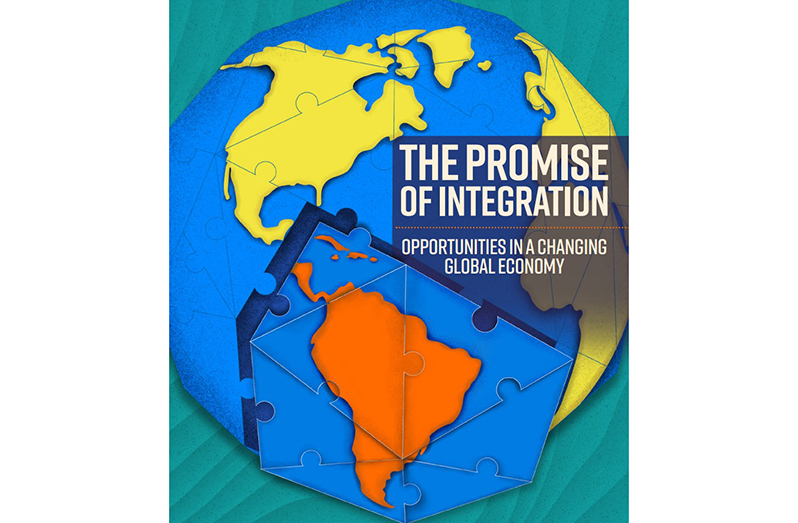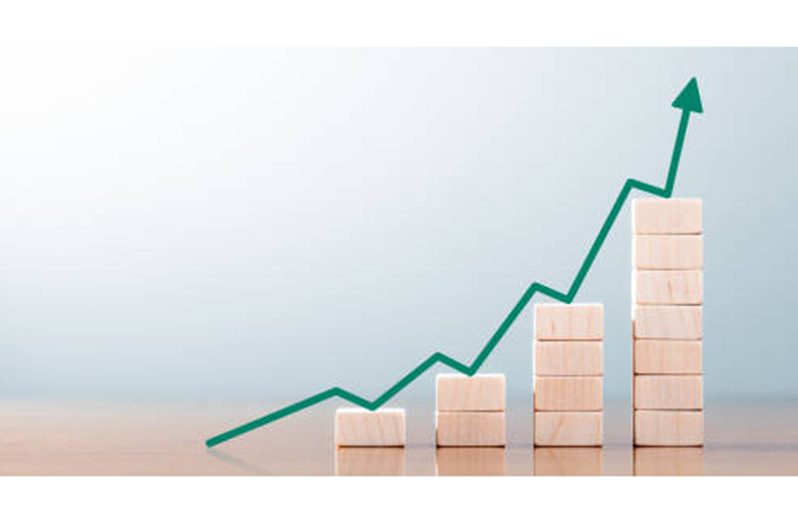–World Bank’s latest projections show
THE World Bank has projected that this year is going to be “substantially bleaker” for the Latin American and Caribbean region than it was last year, but Guyana is yet again expected to stand out among its counterparts with economic growth projected to hover above 20 per cent over the next three years.
The international financial institution in its latest report on Latin America and the Caribbean: “The Promise of Integration Opportunities in a Changing Global Economy,” related: “The Latin America and the Caribbean (LAC) region has proved to be relatively resilient in the face of increased debt stress, stubborn inflation, and uncertainty arising from the Russian invasion of Ukraine.
“Income and employment have largely recovered from the pandemic, poverty has receded, and markets remain guardedly optimistic about the near future. However, headwinds have picked up, and the 2023 outlook is substantially bleaker than 2022.”
Guyana is the only country on course to recording double-digit growth this year and in the near future. The country, according to the World Bank, is set to record real gross domestic product (GDP) growth of 25.2 per cent this year, 21.2 per cent next year and 28.2 per cent in 2025.
Guyana’s resilience is being demonstrated at a time when global uncertainty is rising. And, according to the World Bank, while the world may want to move from COVID-19, new variants and diseases will remain a threat.
“Strengthening resilience, both on the health and macroeconomic fronts, will be paramount. Progress remains pending in both vaccination coverage and health-system preparedness, while the institutionality of macroeconomic policy in some countries is being questioned.
“Although numerous global factors can explain the very modest 2023 growth rates, the forecasts going forward predict the same lacklustre pace of the past two decades, which remains insufficient to reduce poverty, promote inclusion, and defuse social tensions,” the World Bank said.
The evolution of the global economy is, however, providing two new areas of opportunity: The trend toward nearshoring—moving production closer to the US and European markets—and the imperative to combat climate change, which is giving the region a new comparative advantage in sun, wind, hydro, and natural capital.

Guyana is well-positioned to capitalise on those opportunities, and will be looking to advance even further with careful fiscal planning, increased private and public investments, and an overarching Low Carbon Development Strategy (2030), that promotes sustainable development, revenue generation and essentially creates a new frontier to development.
Based on its economic performance over the past two years, Guyana has a solid foundation upon which to continue broadening its horizons and advancing significantly, especially in the medium term.
Senior Minister in the Office of the President with Responsibility for Finance, Dr. Ashni Singh, said that the achievement of real economic growth of 25 per cent over a sustainable period is a feat that is rare in historic economic context.
“Starting from 2020 onwards, we achieved extremely strong economic growth, and the outlook remains extremely favourable,” Dr. Singh said, adding: “In 2023, we’re looking at projected economic growth of 25.1 per cent, and into the medium term for the next three to four years, sustainable economic growth of in excess of 25 per cent.”
Though most of this projected growth is expected to be on account of the country’s burgeoning oil-and-gas sector, Dr. Singh said the government’s focus is on building out the non-oil economy.
“A lot of it is being driven by what is happening in the oil-and-gas sector, but when I describe the kind of growth we are looking for, I speak of broad-based and resilient growth. We have placed the highest level of importance on ensuring that we achieve strong non-oil economic growth, and that we do the things necessary today to continue to have strong non-oil economic growth going forward,” Dr. Singh had said.
In 2022, the non-oil sector expanded by 11.5 per cent, while growth projections for 2023 stand at 7.9 per cent. In the medium term, Dr. Singh estimates that real economic growth in the non-oil sector will be in excess of five per cent annually.
He assured investors looking to do business in Guyana that the country has established a very strong track record of growth in recent years, and has an extremely strong growth outlook for the foreseeable future.
On the subject of management of the economy, Dr. Singh said that the government has been reorienting the focus of the national budget to invest heavily in the things that matter for long-term economic growth, particularly as it pertains to addressing the country’s infrastructural gap.




.jpg)









